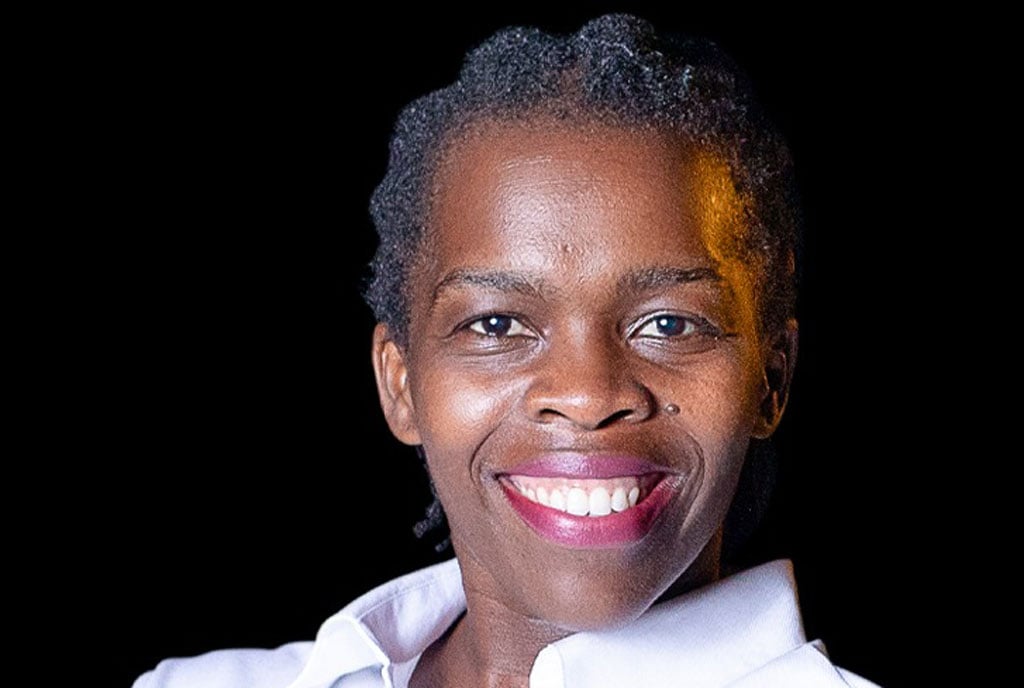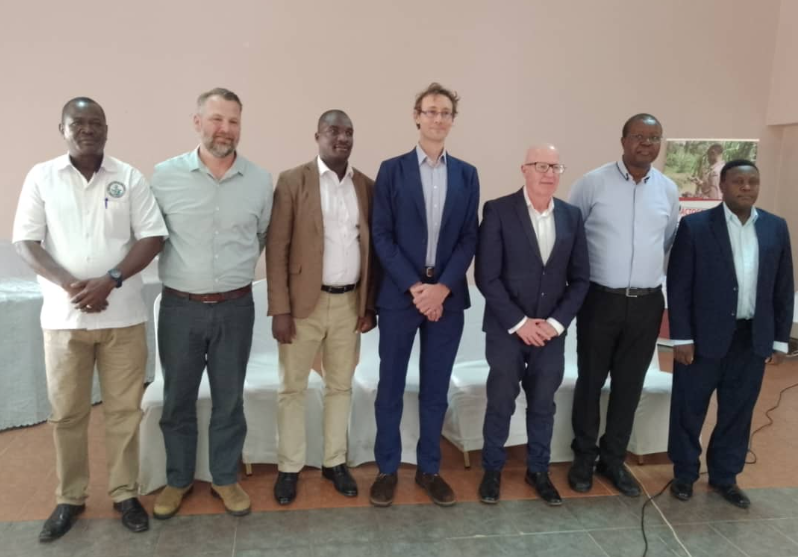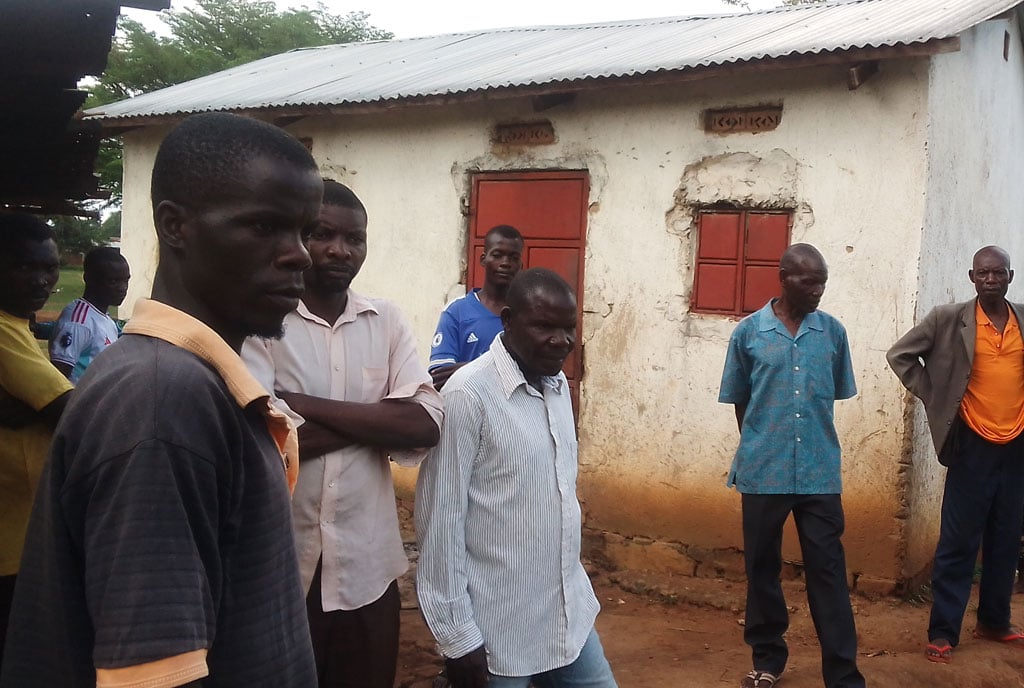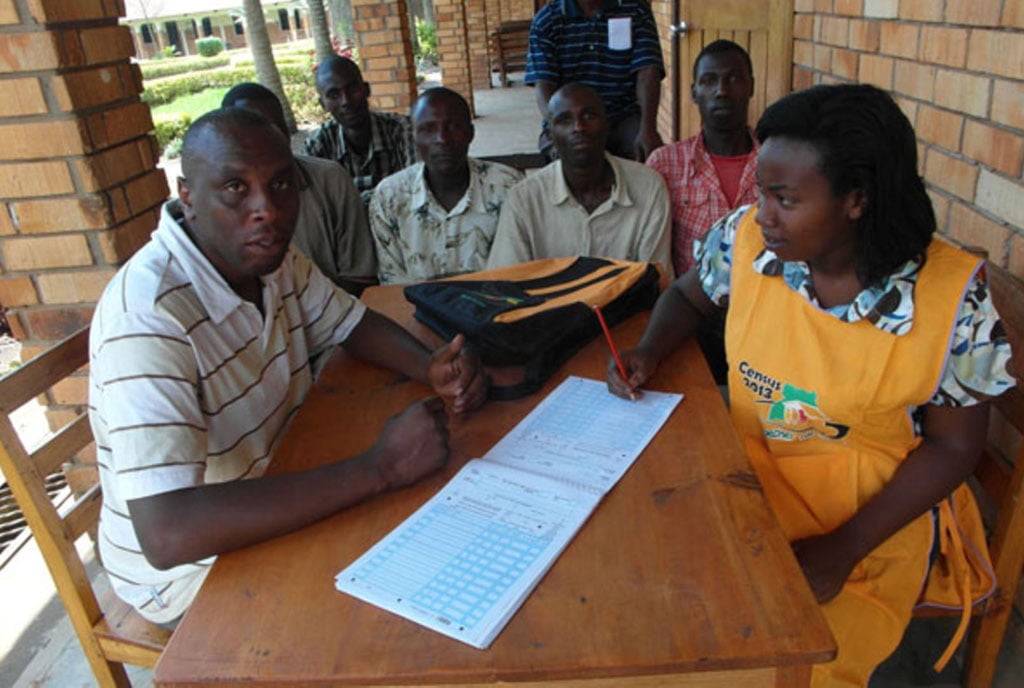How research has changed the weather forecasting narrative

Dr Sansa-Otim believes that at while not many Ugandans mind about the weather to greatly affect how they dress, farmers need close-to-accurate information to avoid huge losses. Photos/ Joan Salmon
What you need to know:
- WIMEA-ICT was essential for East Africa because it provides open source software and hardware designs leading to affordable automatic weather stations compared to others on the market.
By 1986, Uganda had less than 180 automatic weather stations and in some, only rain gauges existed. That was a big drop from 1,300 in the post-colonial era. Subsequently, the country grappled with wrong forecasts and it is such information that prompted Dr Julianna Sansa-Otim of the College of Computing and Informatics Technology to do something.
In 2010, Sansa-Otim’s mother retired, farming was the next agenda and she wanted to help in every way.
“We started out by farming maize on five acres of land hence clearing the land in February, awaiting the rains because the rains come between March and April. When the first rains came, we started planting and before long, the seedlings broke through the ground. Unfortunately, the rains did not last giving birth to stunted plants. The harvest was very dismal and thus a loss,” she says.
On the other hand, Dr Sansa-Otim had been in Netherlands for her PhD (2005-2010) where weather was very central to living to the point of having a public thermometer.
“The weather changed often requiring you to carry different kind of clothing as you left home. Therefore, weather news was important,” she says.
Comparing the Uganda and Netherlands situation, Dr Sansa-Otim believed that while not many Ugandans mind about the weather to greatly affect how they dress, farmers need close-to-accurate information to avoid huge losses.
“If people in Europe can get almost accurate weather information, it should also be possible in Uganda,” she thought.
This quest pushed her to ask about who would make this possible; both in government and academia circles. Additionally, being in academia where significant research is only done when there are funding opportunities, Dr Sansa-Otim started looking for funding leads and she finally landed on a call for funding by the Norwegian government, under the NORHED 1 programme.
“We had also had talks with colleagues from Tanzania, Norway and eventually South Sudan. We then put together a team which included one academic institution and the national metrological authorities from each country. That was the birth of Weather Information Management for East Africa (WIMEA-ICT) using suitable ICT components,” she says.
With the grant in hand (21 million NOK-approx Shs7.64 billion), WIMEA-ICT was one of the 18 NORHED I projects that year.
Therefore, a multi-disciplinary team was crucial and it included meteorologists, weather scientists, engineers, computer scientists and information scientists. 2013 begun a seven year journey and whatever was done in Uganda was done in the other countries (Tanzania and South Sudan) since the challenges were similar across the board.
Progressing
Academic research products, unlike many others rely on students and in WIMEA-ICT’s case, PhD and masters students were the vehicle used to deliver the software and hardware.
“We are a research institution meant to develop capacity. Therefore, we do not hire but develop the human resource as we provide them with scholarships coupled with guidance and supervision. As they produce the results, they also grow,” Dr Sansa-Otim says.
Some of these were Dr Isaac Mugume, Dr Maximus Byabakama and Dr Mary Nsabagwa; all PhD fellows.
Dr Nsabagwa
She now works as a supervisor and researcher at the WIMEA-ICT lab at Makerere University and says the lab specialises in wireless sensor networks and Internet of Things (IoT).
“WIMEA-ICT was essential for East Africa because we provide open source software and hardware designs leading to affordable automatic weather stations compared to others on the market. Open source is devoid of licenses. We also looked to design low-cost hardware such as the weather stations,” she says.
In this journey, the lab, housed at Makerere University had several partners such as the University of Bergen in Norway. We also worked with the Dar-es-Salaam Institute of Technology and University of Juba in South Sudan.
“Each university worked with the meteorological Services of their country because they are mandated to manage weather and climate services, where weather forecasting falls. In the case of Makerere University, we worked with Uganda National Meteorological Authority (UNMA) and the partnership continues because we still support them when the need arises,” Dr Nsabagwa says.
Results
The lab set up and installed 30 automatic weather stations in various UNMA sites. For example, the one in Makerere represents Wakiso District.
Others in Jinja, Kamenyamigo (Masaka District), Iganga Secondary School (Iganga District), Ikulwe (Mayuge District), and Mwiri Boys (Jinja).
“These weather stations were certified by UNMA first and from these, we collected data and tested it then passed on to UNMA for validation. It is from such data that UNMA can create forecasts for various periods such as daily, hourly, as well as seasonal,” Dr Nsabagwa says.
Inasmuch as these were handed over to UNMA, from time to time, the WIMEA-ICT team are involved in their maintenance.
However, weather news does not get to all people for various reasons and in response, WIMEA-ICT developed a free weather information dissemination app (weather information dissemination system - WIDS) for easy access to weather updates on phone.
“Then, the project supported it and were paying for a code (*255*85#) supporting several local languages.
“It gave daily, marine (ideal for fishermen) and seasonal (ideal for farmers) forecasts. After the project, the system was handed to UNMA who have bought a code (210) from Uganda Communications Commission (UCC) thus the need to migrate the app,” she says.
Data from these weather stations has also helped people doing research in various fields.
Previously, UNMA lacked a database for storing weather data, hence, paying heavy licence fees. That presented the need to create a repository to cut out the high license fees. WIMEA-ICT project thus created a Weather Data Repository (WDR).

Part of the WIMEA-ICT team.
Nathan Kunya
He was an intern working under Andrew Mwesigwa, a PhD fellow during the WIMEA-ICT project. He supported the task to create the software for the repository as well as the user training. When the project started, UNMA manually recorded data from the various weather stations.
“Previously, someone manually went to the weather station every 30 minutes to collect data but with the system, data comes in every five to 10 seconds without going to the weather station. The system generates reports based on the data collected,” Kunya says.
With the automated repository, the various weather station sensors sent in data to a central repository where the team ran several tests on it to convert it to what UNMA could use.
Coming on board, Kunya was a novice programmer but learnt a lot.
“I also learned how to interact with people outside the lab thus showcasing what we are doing at Makerere,” he says.
Ronald Odongo
He worked under Dr Isaac Mugume and at that time, UNMA did not use numerical weather models which are useful in weather prediction. In this project, Dr Mugume introduced the team to the weather research and forecasting model (WARF model) and he was the first person to use it here.
“The system comprises of various mathematical equations and puts in the different atmospheric components such as wind quality, wind movement, heating of the atmosphere, vegetation and water bodies to ably forecast the weather patterns for short and long periods,” Odongo says.
As part of his PhD research, they managed to validate the model for Uganda under different schemes.
“That was to see if the model would work for Uganda and it was done at a national level with publications to prove it. We later introduced it to UNMA,” Odongo says.
Currently, the model is used in UNMA for forecasting for short terms such as what is needed for aviation and the long term.
“For the latter, the limitation is that UNMA does not have the super computers to run the model in the shortest time possible. However, unlike previously where UNMA got weather forecast products from IGAD’s Climate Prediction and Applications Centre (ICPAC), its personnel go there to run the model and bring back the output,” Odongo says.
Dr Mugume is now the director in charge of forecasting at UNMA.
Challenges
Harmonising goals: While Makerere had its own goals, so did UNMA.
“We thus had to meet every once in a while to ensure we were on the same road. That sometimes caused delays. However, they were more than willing to help us,” Dr Nsabagwa says.
Expectation vs reality: When doing research, sometimes, the outcomes are not what was expected. For example, one could leave Kampala with well tested hardware for a weather station and install it in Gulu yet fails to send updates after a few days. Returning immediately might not be possible hence missing out on critical information,” she says.
Funds: For example, keeping the WIDS working meant paying UCC for the code as well as the telecom companies so the code can work on their network. “We were also paying for people to get the SMSs.
For instance, sometimes, we pre-paid Shs2m worth of messages per month. Even in the case of the new code, UNMA had to part with Shs47m as annual USSD code license fees to UCC. We hope that since this is a public interest subject, government can take it on,” she says.
Delayed on boarding: While the repository installation and user training was done at the UNMA premises and all seamed promising, the responsible department is yet to make use of it. “People are the biggest component of any technology and we worked with the different users at the different levels to foster full system ownership. However, the people factor of how eager, willing, and exposed one is matters in software adoption. That said, every time we interface with UNIMA, we discuss about total software adoption,” Dr Sansa-Otim says.
What next
The WIMEA-ICT lab, has since birthed another project – Adaptive Environment Monitoring Network of East Africa looking protecting bees and controlling fruit flies because they are crucial to human survival.
When WIMEA-ICT wrapped up, there was a call for the NORHED 2 funding and the upper hand Dr Sansa-Otim and her team had over other vying projects was proven experience of delivering in the past. “That was in addition to the strength and persuasiveness of our new project. Once again, I led this team comprising of IoT experts, software Engineers, Telecom engineers, meteorologists, entomologists as well as the Artificial Intelligence Lab to help with data interpretation,” she says.





